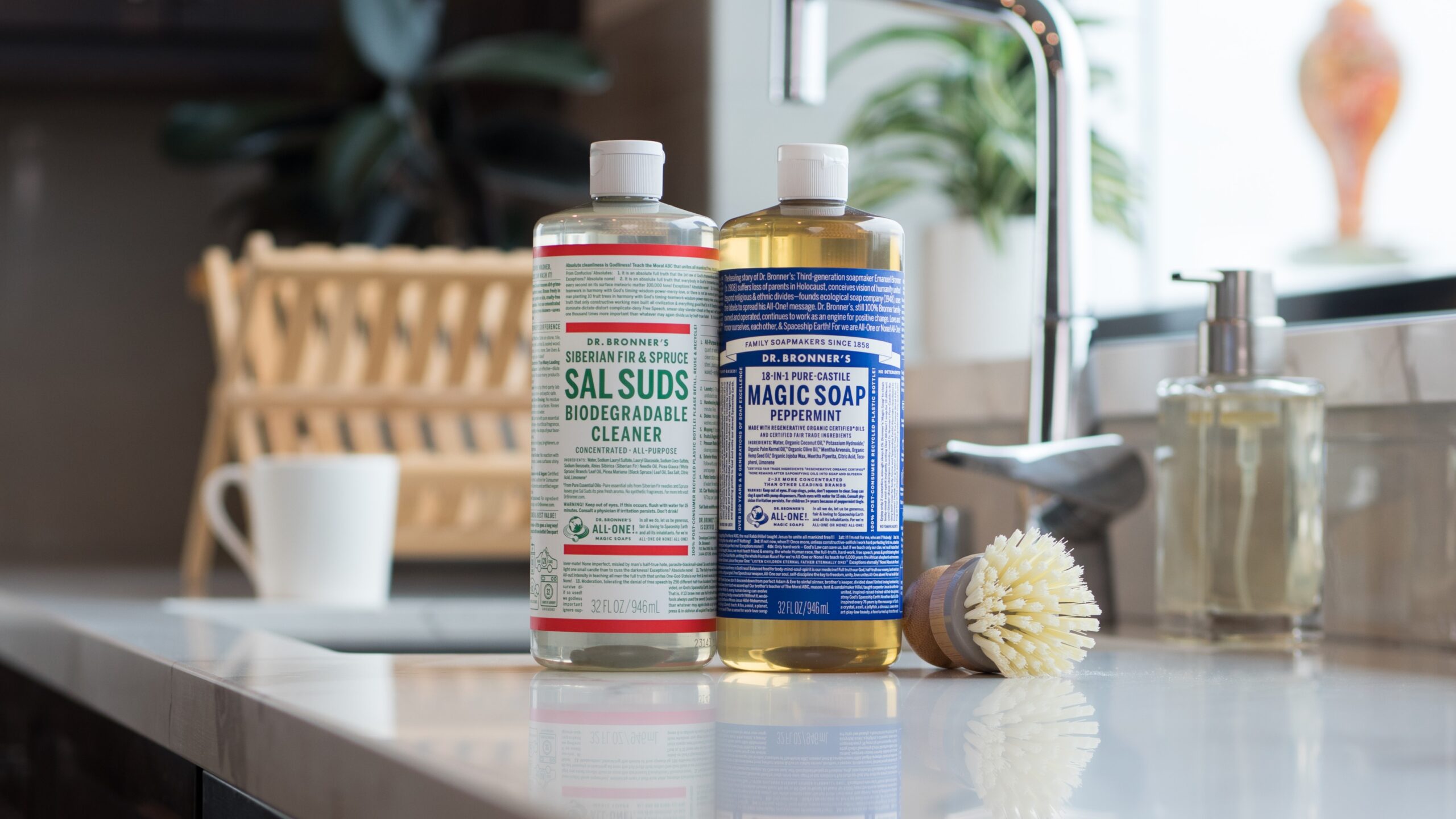
I talk a lot about the exceeding versatility of Dr. Bronner’s Castile Magic Soap and Dr. Bronner’s Sal Suds. There are so many overlapping uses. But is there any time in which they aren’t interchangeable? Yes, but just a few.
Castile Magic Soap is primarily designed for the body. The blend of oils (coconut, olive, palm, jojoba, and hemp seed) are designed to be the most nourishing to our skin. But wait, there’s more. Because it is such a beautifully simple soap, it also cleans many other things amazingly well, whether it’s your dog, your sinks, or your floors. You can find details of all these uses on this Castile Magic Soap Dilutions Cheat Sheet.
Because Castile is a true soap, it reacts with the minerals contained in hard water. (Here’s my test to find out if you have hard water.) The more dissolved minerals there are, the “harder” the water. The reaction of soap with these minerals in the water leaves behind an insoluble film that’s commonly called “soap scum”. This term is a bit of a misnomer, because it’s not actually soap that remains, but a precipitate of minerals.
You’ll only notice this on shiny objects that are left to air dry. They will take on a whitish film. (Read my post on eliminating soap scum.) Also, absorbent fabrics like towels and cloth diapers will become stiff and lose their absorbency. (But laundry in hard water is still doable – Read more here.)
Enter Sal Suds. This is our household cleaner developed by my dad. Sal Suds doesn’t react with hard water. It rinses cleanly and leave surfaces sparkling. No more film on the tub or towels! For it’s multitude of uses, see the Sal Suds Dilution Cheat Sheet.
That’s all well and good, but I haven’t answered that initial question of what to use when.
Situations where I exclusively use Castile Magic Soap
- Myself – Head to toe.
- My animals – Any Castile Magic Soap scent on my dog. However, avoid using Tea Tree as the oil can be toxic to animals. Baby Unscented on my cat.
- Pest Control – Only Castile Magic Soap has this ability to eliminate insects.
Situations where I exclusively use Sal Suds:
- Dishes
- Cars
Other than these few cases, I reach for whichever is closer at hand.
Now you know what to use, but perhaps you want to know why?
Soap and detergent are both surfactants. The word “surfactant” is a portmanteau of “Surface Active Agent.” If you’ve ever done a belly flop into a pool, then you’ve felt the power of surface tension. Surfactants break through the surface tension of water and make water really soak in.
My brother Mike says: Surfactants make water wetter.
The second magical power of surfactants is that they make oil and water coexist. Which they don’t otherwise like to do. This is why you can’t just rinse oil off your hands. The water runs over the oil like it’s just not there. And it just doesn’t care.
Now brace yourselves – you’re about to learn some Greek!
Surfactants solve the oil/water repulsion because one end of each surfactant molecule is hydrophilic and the other end is hydrophobic.
Hydrophilic literally means “water (hydro) loving (philic).” This end of the surfactant molecule grabs hold of water. On the other side, hydrophobic means “water (hydro) fearing (phobic).” A little exaggerated perhaps, but this end grabs the oil.
But we’re not talking about just one. Surfactant molecules work in groups. In a solution, they float around looking for oil molecules and snag with those hydrophobic tails, totally surrounding each oil molecule so there’s no part of the oil molecule left exposed to water. This little nugget is called a micelle.
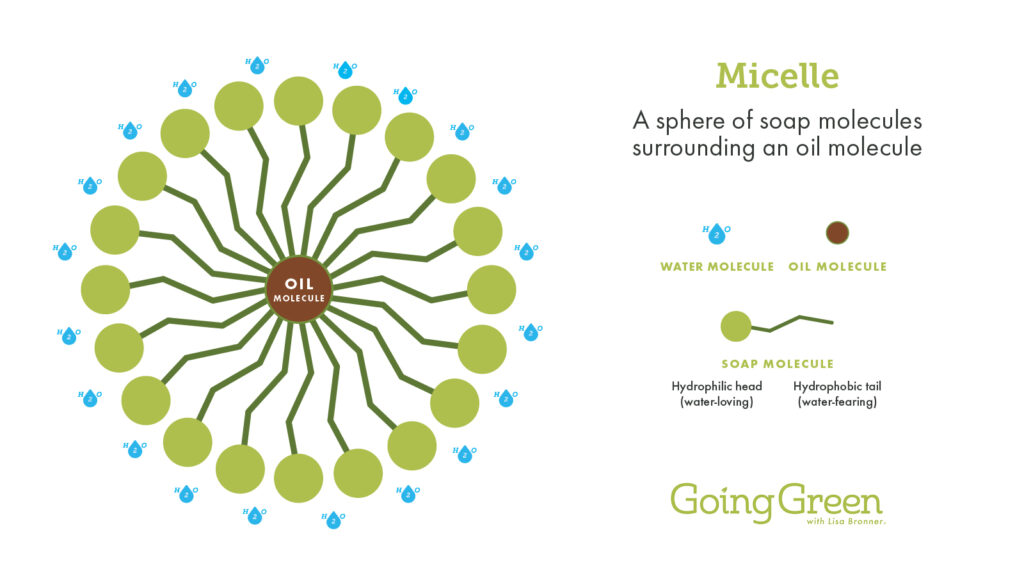
The outside of this micelle is now entirely hydrophilic, which means instant attraction to the passing rinse water which carries it all away.
It’s like they’re filling those oil molecules with a whole lotta love and reaching out and connecting them with their former enemy, those water molecules. And once they’re connected, they realize it’s not so bad. They can get along. They can hang out together. I think there’s a larger lesson here.
You still with me?
So they’re both surfactants. Now for some differences.
Soap is close to nature, made by a beautifully efficient one-step reaction of combining oil (coconut, palm, olive, jojoba, and hemp for our Magic Soap) with a strong alkali such as sodium or potassium hydroxide (the first also known as lye). Out of this combo, you get soap, glycerin and water. Bam! No leftovers. No waste. Beautiful.
Detergents are more complex and must be synthesized. They were developed during the World Wars when the oils needed for soap were scarce. They can start with botanical substances (such as coconut oil for our Sal Suds) or with petroleum derivatives. And the uses of detergents is vast and wide.
Tidy as it would be, I can’t sum it all up by saying, “Soap good. Detergent bad.” That would be a gross oversimplification. There are bad soaps (not ours, of course) that are poorly made with bits of unreacted alkali floating around in them ready to saponify your very body. You become a walking bar of soap. Ouch!
And there are excellent detergents, such as our Sal Suds, which is super duper tough on grease and completely clean rinsing, yet mild, readily biodegradable.
So that’s a little bit more about the magic of cleaning and the beauty of chemistry.
Further reading
- Sal Suds Dilution Cheat Sheet
- Dilutions Cheat Sheet for Dr. Bronner’s Liquid Castile Magic Soap
- Magic Balms Usage Cheat Sheet
- Coconut Oil Cheat Sheet for Kitchen & Body Care
Sal Suds cleaner shows >60% biodegradation after 28 days per ISO 14593.
This use and many more are in my book, Soap & Soul: A Practical Guide to Minding Your Home, Your Body, and Your Spirit with Dr. Bronner’s Magic Soaps, available now in hardback on DrBronner.com or at your favorite bookseller, and as an eBook and audiobook (read by me!) from wherever you download or listen.

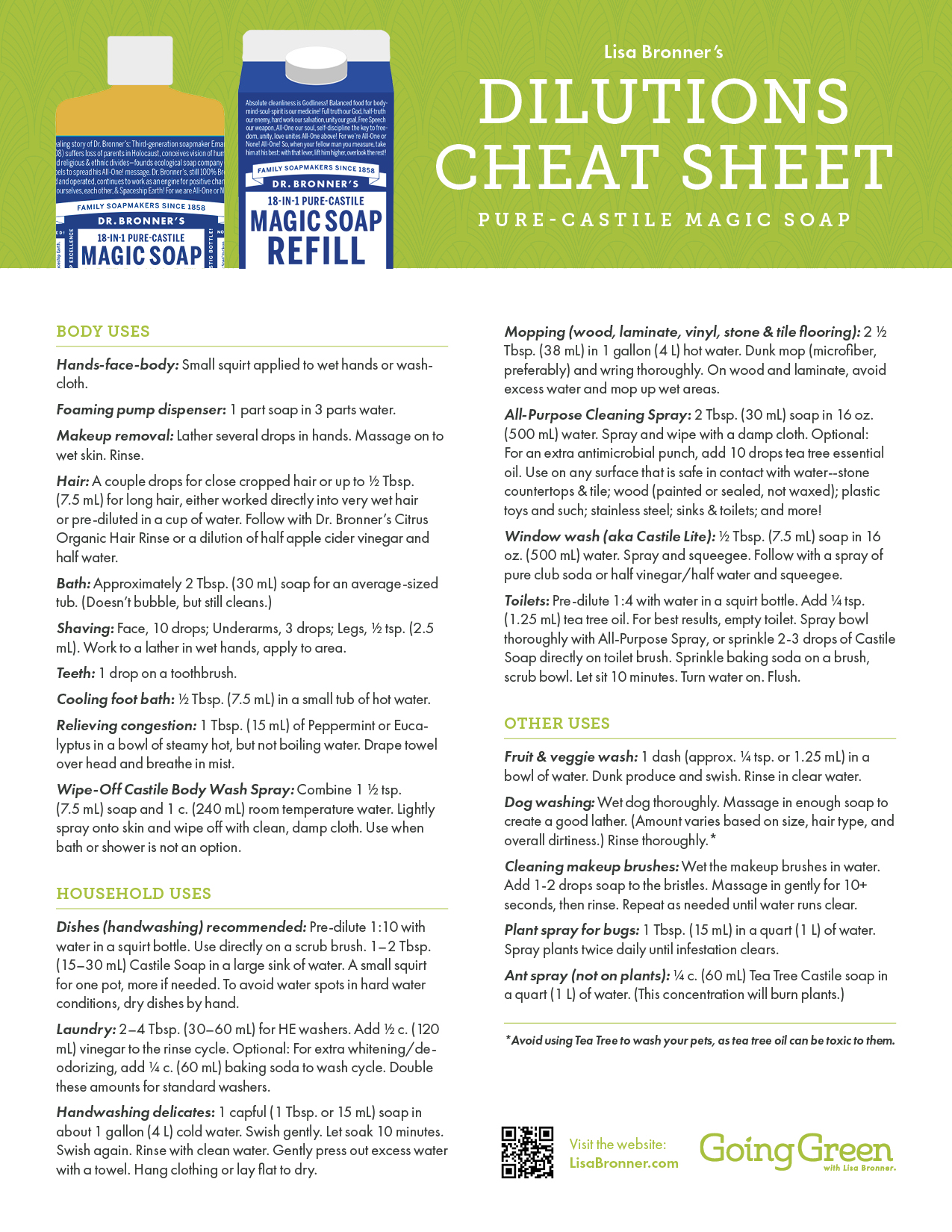
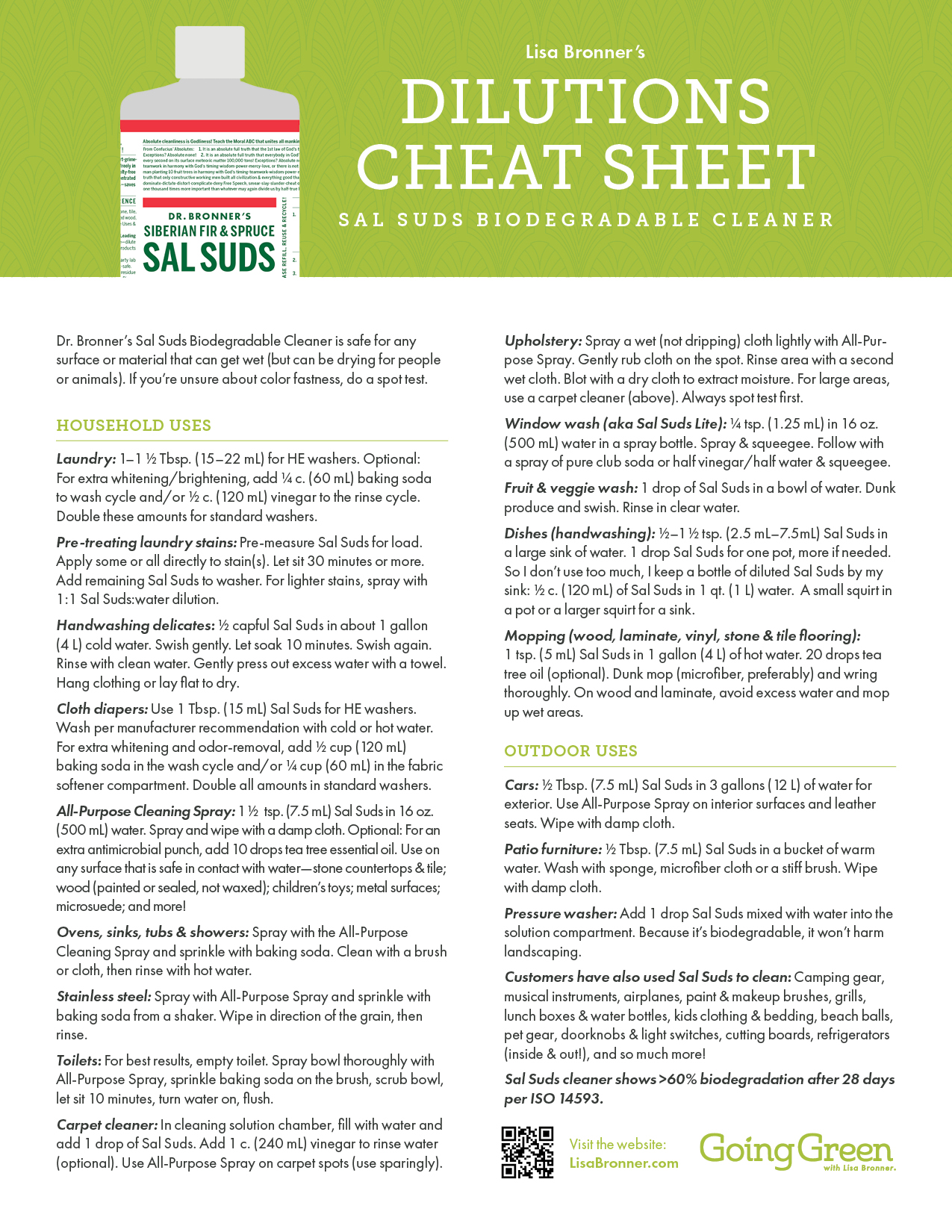
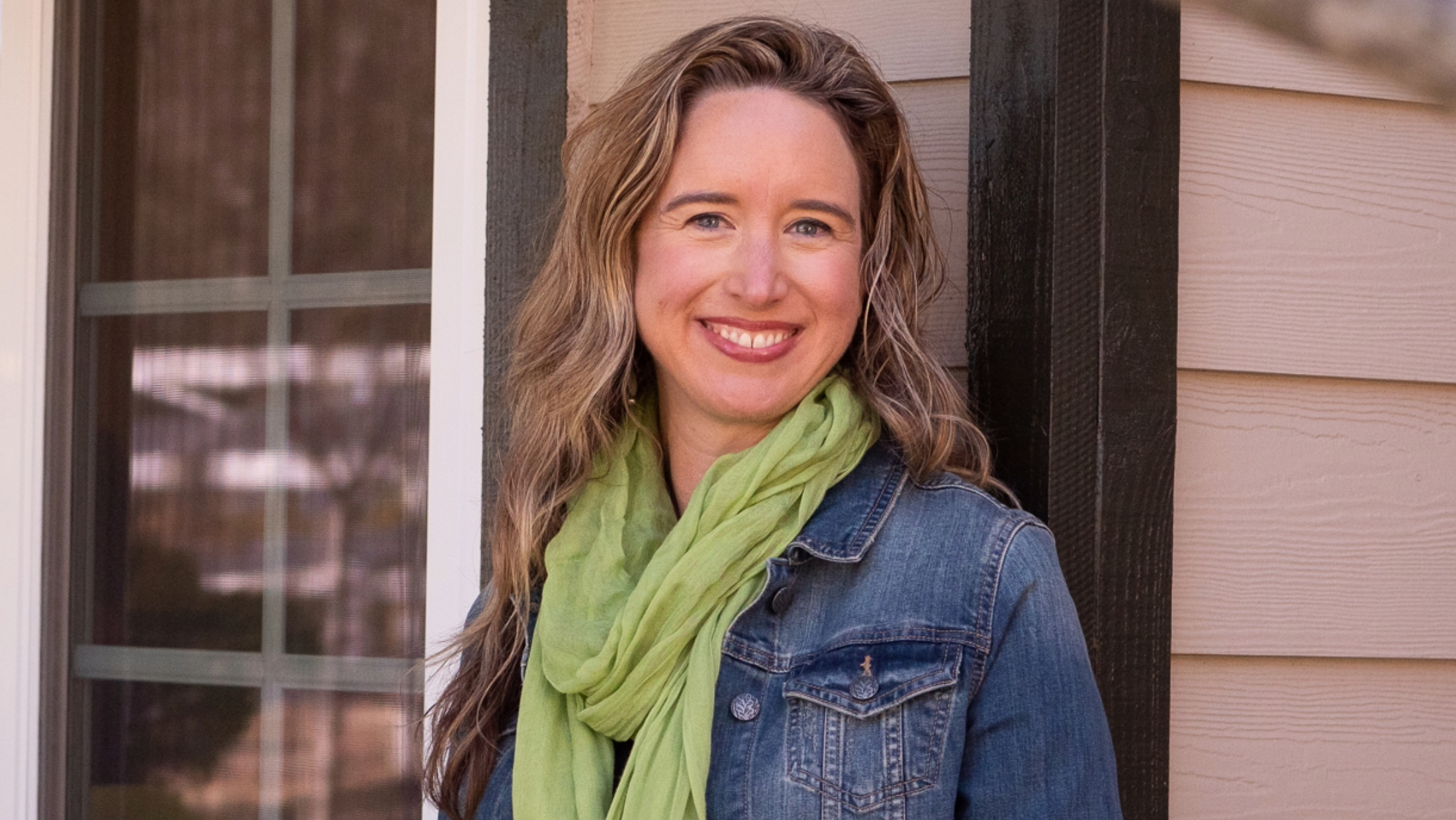
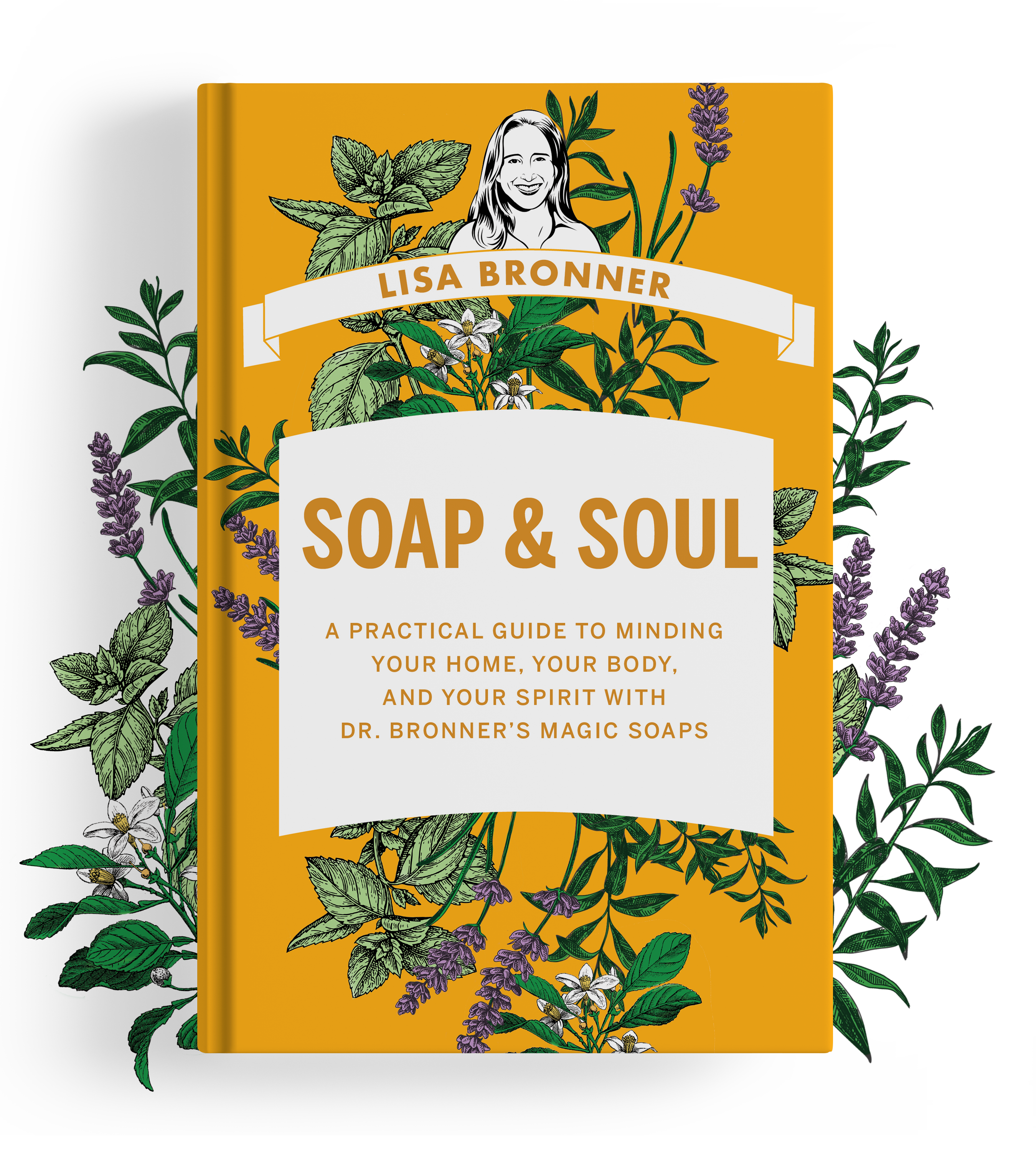
Been using Salsuds for years but no longer available in UK or Ireland, what’s the best replacement ?
Rarely available at twice the price.
Regards Edward..
Hi Edward- Unfortunately, Dr. Bronner’s is not actively selling Sal Suds in Europe and there isn’t a timeline for when it might return. I know this is an inconvenience, and I’m sorry for that. In the meantime, the Castile Liquid Soap can be used for household cleaning purposes. Check out my dilutions Cheat Sheet for dilutions and recipes: https://bit.ly/CastileSoapDilutionCheatSheet
Is there a brand of tea tree oil you can recommend? Thank you.
Hi Ted- While there isn’t one brand of essential oils I suggest, I do recommend always making sure the essential oils you purchase are 100% pure essential oil. I also look for USDA organic certification to verify integrity and purity. Natural grocery stores often have a good selection of quality essential oils to choose from.
Peppermint, eucalyptus, and tea tree oil are all considered toxic to pets. Be careful when using these amazing products around your animals.
Hello,
I’m considering switching to Sal’s Suds for laundry. I always use vinegar in my rinse aid cup instead of fabric softener. Will this cause a chemical reaction?
Hi Kathy – Usually, mixing Sal Suds and vinegar would reduce Sal Suds’ cleaning ability, but using it in the fabric softener compartment of your washer will not have a reaction since the vinegar is dispensed during the rinse cycle, after Sal Suds has been rinsed out of the fabrics. I dive deeper into laundry care here if you’d like to read more, https://bit.ly/LaundryCareWithDRB.
Hi there!
I have well water, which is SUPER hard. I have a new puppy also. I know that I can use Castile Soap on my puppy, but I also know that it has a reaction to hard water. Is there a chance that my Castile soap and hard water could be reacting and causing dry skin and itching? My puppy is prone to itching, so I want to use the most natural and best option for him. Can I use Sal Suds to wash my puppy? Is that the better option in this case?
Hi Brenda – Congrats on the puppy! I have one that just turned 1, and she is definitely in a bit of adolescence. We are having to revisit some lessons I thought she’d already learned! For keeping your pup clean with hard well water, I have a couple thoughts. The Castile is my go-to for dogs, but with the itchy skin, I would opt for a mild scent (Almond is really nice) or no scent (Unscented), and not the Peppermint. (Sal Suds is not a great option, especially not for already itchy skin, as it can be drying.) With the hard water, I imagine that you are thinking there might end up being a mineral deposit left on the fur. If you are already using one of the milder scents and still noticing the itchiness, this might be the case. The only two options for combating this are to soften the water or to use an acidic rinse, such as Dr. Bronner’s Hair Rinse or a bit of highly diluted lemon juice or apple cider vinegar. I don’t know if any of that is feasbile for you.
Will or can Sal Suds be made in a different scent?
Hi Julie- At this time I’m not aware of any new Sal Suds scents in the works, however, you can add pure essential oils to Sal Suds to create your own scent. I think lemon and rosemary would be great additions. How much to add depends on the EO – some are stronger than others. In 32oz, start with about 15 drops. If desired, add a couple of drops at a time for a stronger scent.
Hi! I started using Sal Suds for many things around the house because we have straight up hard water. Will you ever be making this in a non-scented or different smell? The smell is just ok to me and I’m not a fan of how my laundry smells when using it. (Mainly coming out of the washing machine- it almost smells musty) It doesn’t bother me for cleaning purposes because I can’t really smell it. I would also like to use this as dish soap but again, the smell isn’t my favorite. Help!
Hi Julie- I’m glad to hear the Sal Suds is working for you, but sorry to hear you’re not enjoying the scent. At the moment, we don’t have plans for other scents, but I’ll pass your request along. In the meantime, you can add essential oils to Sal Suds to create your own custom scent. Lemon, rosemary, and cedar are nice additions to Sal Suds, but there are others as well. For laundry specifically, here are some other ideas to add scent to your laundry:
Use well-sealed herbal sachets in the dryer. Lavender, mint, and lemon balm are great options.
Store clothes with herbal sachets.
Store clothes with a cotton pad sprinkled with a few drops of essential oil. Be sure the essential oil does not touch clothes to smudge them.
Hi. Can you tell me if sal suds can be mixed with vinegar?
Is there anything that it can’t be mixed with? Thanks!
Hi Sabrina- Vinegar does not react with Sal Suds, which as a detergent is inherently more stable. However, we have done effectiveness testing on this one because I get a lot of questions, and Sal Suds mixed with vinegar is less effective at cleaning than Sal Suds alone. Check out my other article that details what can and can’t be mixed with Sal Suds at https://www.lisabronner.com/what-can-you-mix-with-dr-bronners-sal-suds/.
I found Sal Suds years after I started using Castille Soap.
It cleans my wood floors with zero residue….That was my first WOW …
One day, i was out of bathsoap….I grabbed my Sal Suds …. added to my bath water and used it as body soap.
Super WOW…my skin was so soft …something about the oil in that ….it soaks in …I love it …and am a fan in all areas.
Now, i will start using it in my laundry…..Let’s see how that goes.
To me, it’s way better and has a wider reach over the Castille Soap…i like the thinkness of it …and how i use less …
Thank You !! ….Fan for Life…!!
I’m really gutted that Sal Suds (which I swear by) is like gold dust in the UK. It is being phased out, and I get any explanation as to why. Can you offer any explanation?… Many companies have it listed as ‘discontinued, and when you do find it, its almost 3 times the price! I feel so hopeless now, as I rely on it heavily for washing up as well as clothes laundry. What can I add to castile soap to make it as effective as Sal Suds?
Hi Gina- I’m so very sorry for the inconvenience. Unfortunately, due to regulatory requirements, we are not actively selling Sal Suds in Europe. At the moment we do not have a timeline for when we will be reintroducing Sal Suds to the market. In the meantime, our Castile Liquid Soap can be used for household cleaning purposes. Check out my dilutions Cheat Sheet for dilutions and recipes: https://bit.ly/CastileDilutions
I’ve been using both Sal Suds and Castile Soap for a few years now. I love not having to buy so many varieties of cleaners! But since last week, for the first time, I am using a stove-top without coils. 🙂 Can you please advise what or how to clean stains from a glass-top electric stove? I really hope I won’t have to start buying special ‘pink stuff’ cleaners.
Hi Mary- It’s great to hear that the Castile Soap and Sal Suds are working so well for you. A streamlined cleaning cabinet is something I enjoy as well! A glass top range is fairly easy to clean. For light spots and grime, clean with the All-Purpose Spray (1 Tbsp. Sal Suds or 1/4 c. Castile Soap in 1 quart of water). For stubborn, burned-on grime hot water works great. Lay a washcloth over the grime and pour very hot water (don’t scald yourself) on the cloth until it is saturated. Let the cloth sit there about ten minutes or until cool, and then wipe up. Another option for burned on spots is a paste made of baking soda and water. Let it sit on the spot for 15 minutes or overnight and wipe with a damp cloth. This article on my website goes deeper into this topic and also covers oven cleaning, https://www.lisabronner.com/how-to-clean-an-oven-and-stovetop/